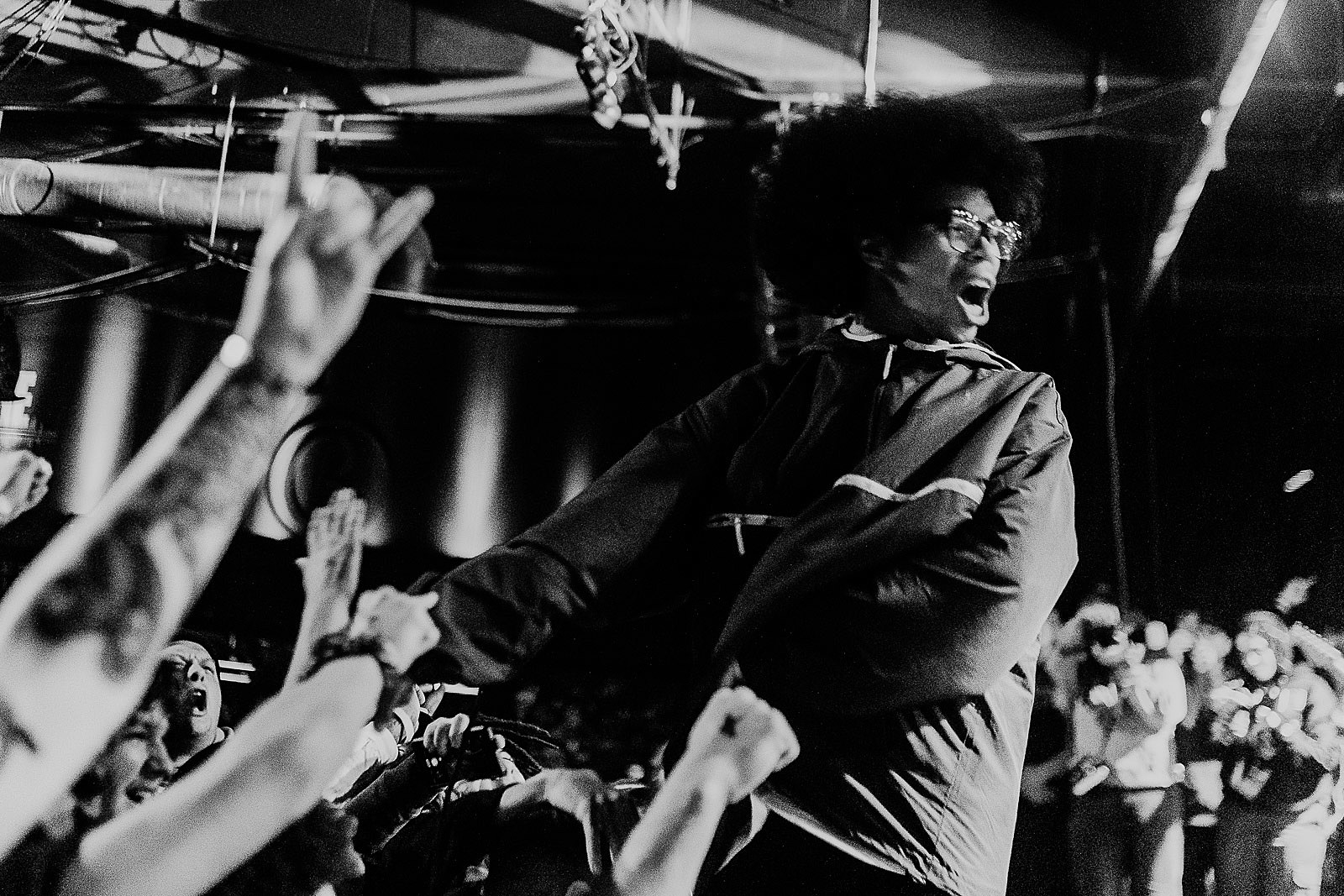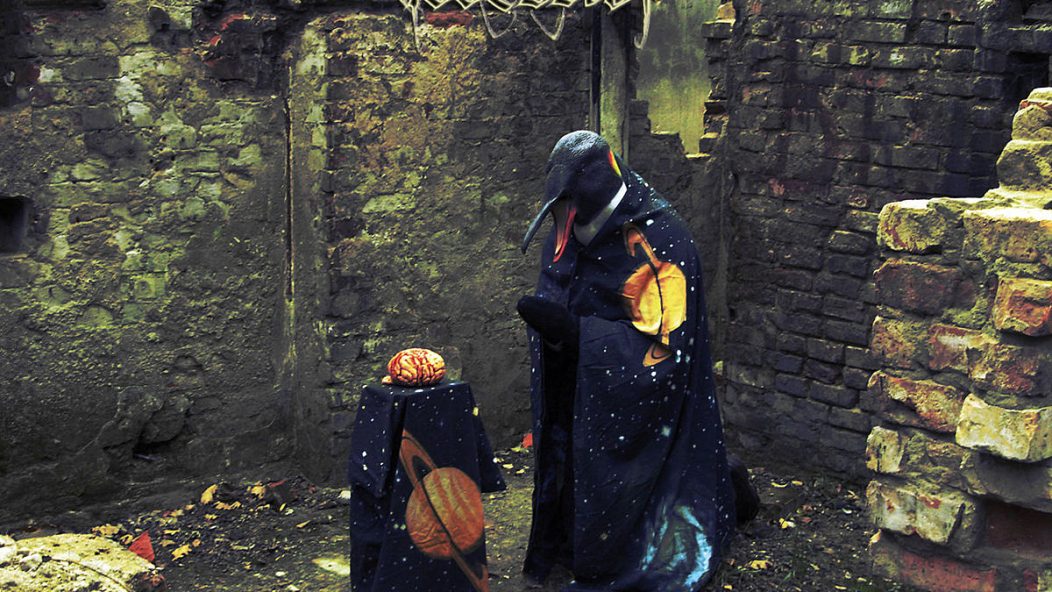
Todesstoß Reveals Secrets to Aesthetic Perception (Interview)
Black metal experimentalist Todesstoß‘ Martin “Traumorgane” Lang has been a figure in my nightmares for quite some time. A grainy image of a man with lengthy tubes for arms, terrifying music, and folk art-inspired abstraction all dictate this, and for many years, at that.
Since 2000, Todesstoß’ multifaceted, desperate, dense, and strange music trawls the depths of human misery and psychological struggles in favor of expressing them in a raw, uninhibited fashion. Though Traumorgane has been joined by various session musicians over the past two-plus decades, Todesstoß, and by extension his “expressive electronic music” project Venuspuls, are uniquely his, an extension of Traumorgane’s inner psyche and creative spirit.
In a rare and lengthy interview which can be read below, it was my pleasure to discuss Traumorgane’s body of work, his philosophy on art, and many more concepts. Thank you to Martin Lang for agreeing to do this interview and for the many, many visual aids that accompany it!
…
…
How would you describe Todesstoß artistically? Is there a specific era like expressionism in which you feel your music and art fit?
Everything that touches Todesstoß as a result of an aesthetic perception is a right description. The artistic placement depends even for me on the point of view. A very interesting comment Déhá / Yhdarl made in the past was that: “Todesstoß is not a style; it’s a mood.” So this may show how the fountainhead is placed beneath the earth, bringing a fountain of sounds to every thirsty listener, who wants to drink from the dark well of my inner self.
The term “expressionism” was made up by other people and is too small for the world Todesstoß has to offer. But for sure, from past to present Jugendstil, Symbolism, and classic modern art including expressionist and surrealistic elements were a part of the visual and auditive.
Luciano from I, Voidhanger, the label I have been cooperating with since a couple of years, sees, at least, the younger Todesstoß as a kind of bizarre theatre.
Bassist Nils “Euer Gnaden” Sommermeier’s entrance to the project on the Heikäne Löwentötrin EP, turning it more into a “band” proper, marked a distinct change in Todesstoß’ sound towards something more progressive and cinematic. What led to this change from the minimal to the extravagant?
Concerning the integration of other members to Todesstoß, it changed few but fine aspects of the compositions due to the personal styles of the contributions, which took the ideas, the general development and songwriting I still kept on my own, to a higher level. Heikäne Löwentötrin was the second collaboration with Euer Gnaden, who got his baptism of insanity with the highly mad album Sauglingshängwerk Aushilsheins. He composed the bass lines for the title track and Heikäne Löwentötrin. Just brilliant.
Yes, the aim of Heikäne Löwentötrin was to present a main idea of the surrealistic movement, namely the “femme fatale,” but put in a Todesstoß costume, showing new ornaments of flickering creative lights floodlighting the shadows of all mundane.
For me personally, Larvalis’ Todesstoß vocal performance on this track, which was mixed into the foreground, due to playing the ultimate role in this theatre of horrors and primeval fears is still one of the most outstanding, radical, and absolute in the fields of dark metal.
The extravagant or, as I would prefer, the overemphasized element of the song was not a new element that appeared out of nowhere, but was developing from 2008 on even more and more leading to an art and music form that knows no limits in its creation anymore. This special development found its opus magnum in the 7th Todesstoß album Hirngemeer, Todesstoß’ enfant terrible.
Your vocals have always been singular (I’ve heard them compared to an elephant’s wailing), somewhat in line with the “depressive black metal” voice approach but with an extra layer of madness, though more recently both new auxiliary vocalist Benjamin “Flesh of L.” Schmälzlein and yourself have been experimenting with sprechgesang (or “talk singing” for the uninitiated). What goes into picking a vocal technique and style for a Todesstoß release, and how do you find yourself sharing vocal space with this relatively new band member?
Never heard the wailing of an elephant, really, so this can’t be an influence!
I remember reading something about elephants, too. Are we talking about the same thing, an older Metal Archives review that got lost? Hehe, but it was not very charming. So what’s behind this? Interesting every time. Here and there, I came across a certain helplessness to describe the impressions from Todesstoß music in reviews, like the songs they had to face created a certain instability of the reviewers’ foundation of empty phrases.
I always had the feeling that Todesstoß’ music is misunderstood, not accepted as normal, or even dangerous for the human psyche, which is exactly the antithesis of my aesthetic perception.
In contrast to other bands, in Todesstoß, one of the main emphasis (besides the “snakey” lead guitar) lies on the vocals for sure. This goes from mixing it into the foreground, putting style and level of expression to a certain max, and keeping it various. This last point presupposes a certain grade of experimentation concerning choice of words, emphasis, speed, tone height, and much more. In Benjamin, who was a member of the band for several years until 2016, I found a perfect fellow in creating and developing the vocal compositions in the respective result. This result depends on topic, character and style, mood of the song.
Yes, I felt very well sharing vocals with other musicians, though the most perfect experience and result will be the involvement of a new vocalist, W., for the upcoming album Das Liebweh-Dekret.
…
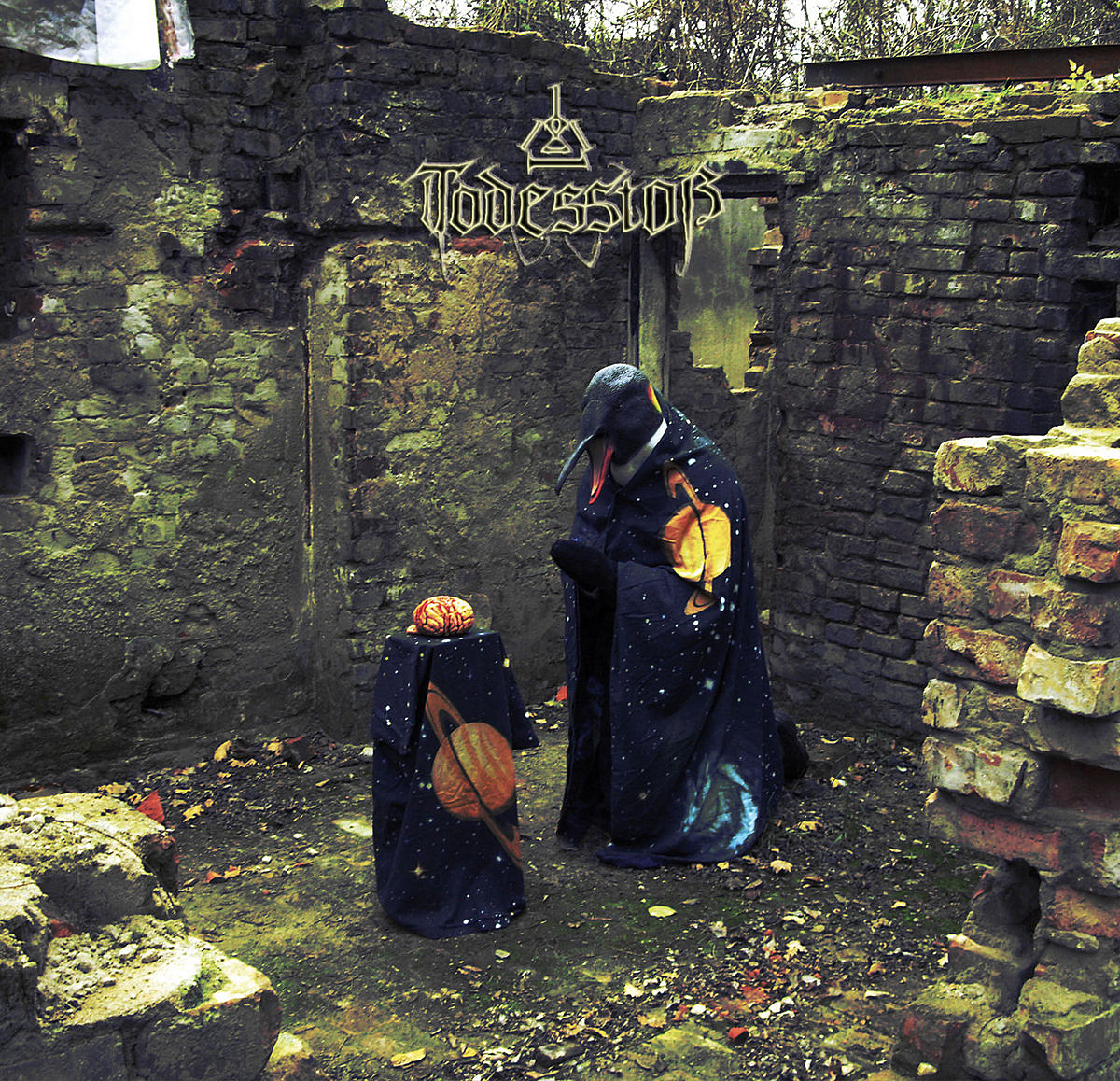
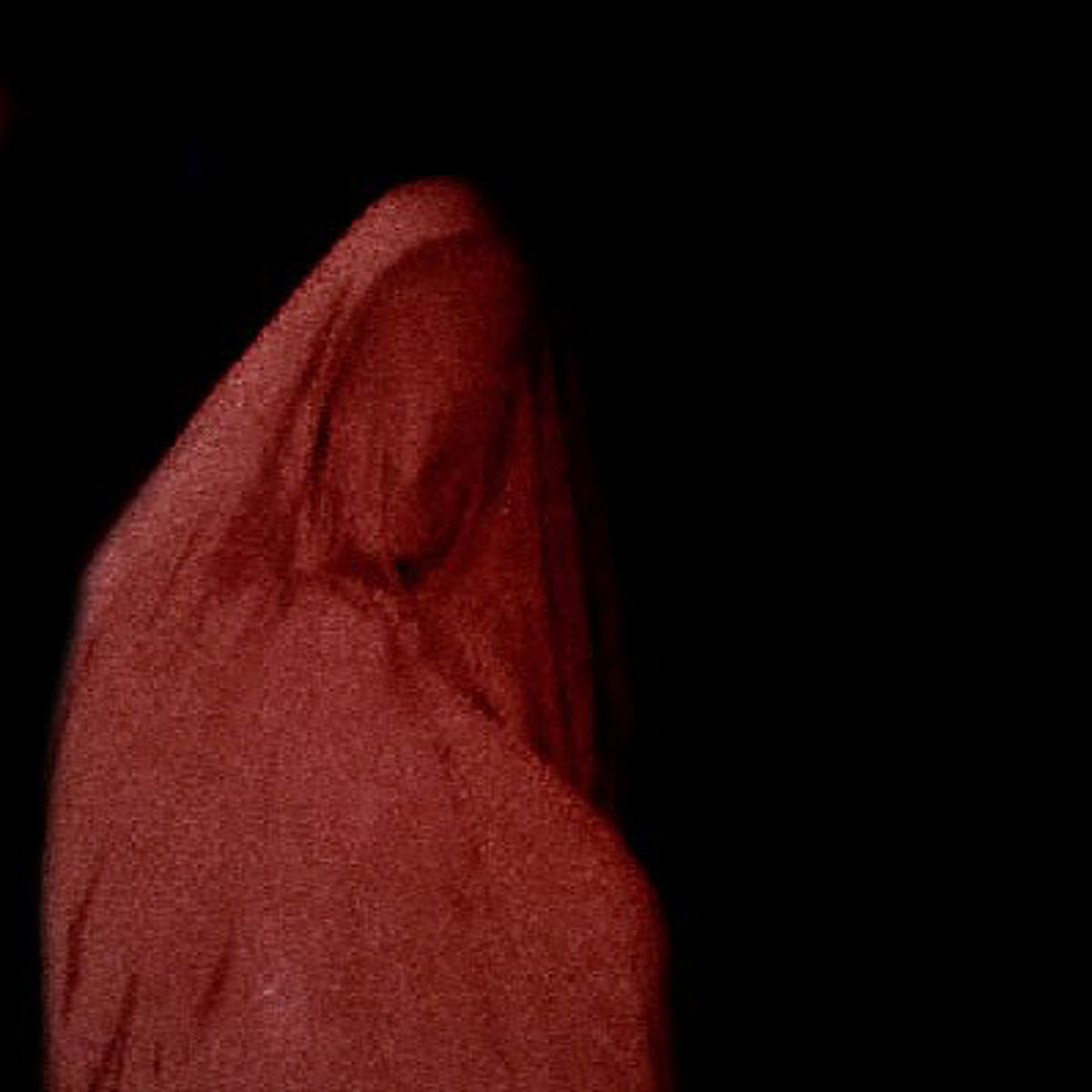
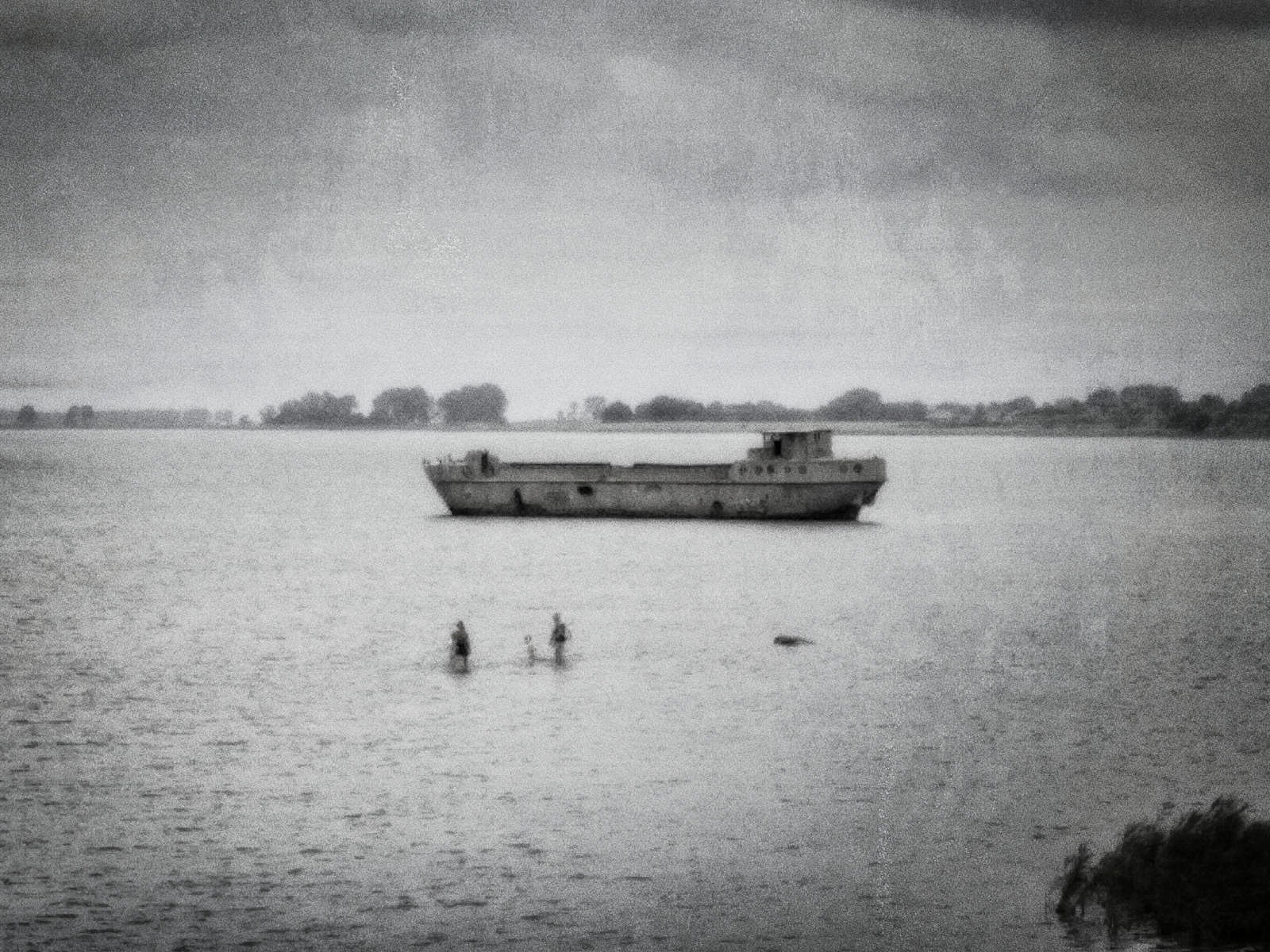
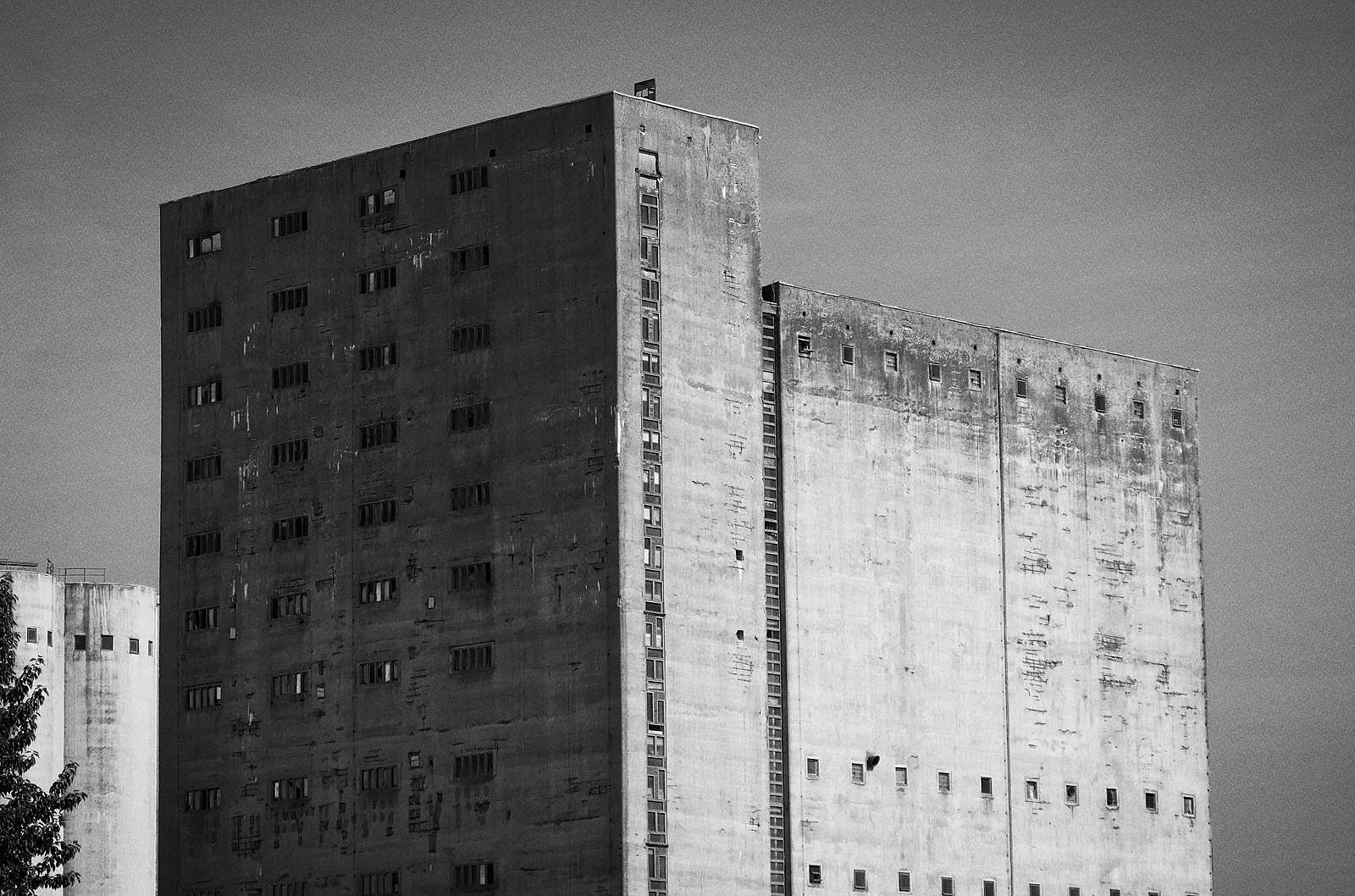
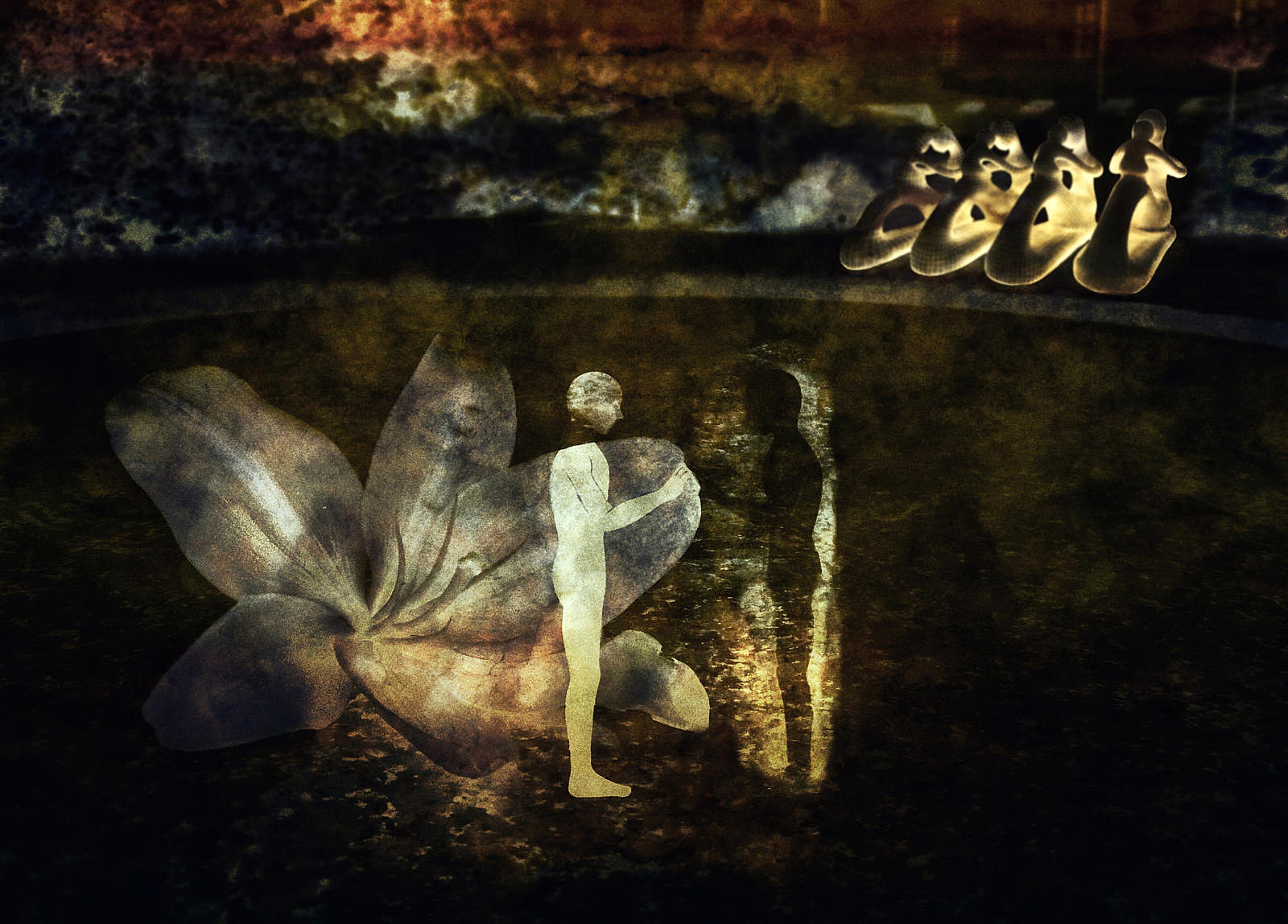
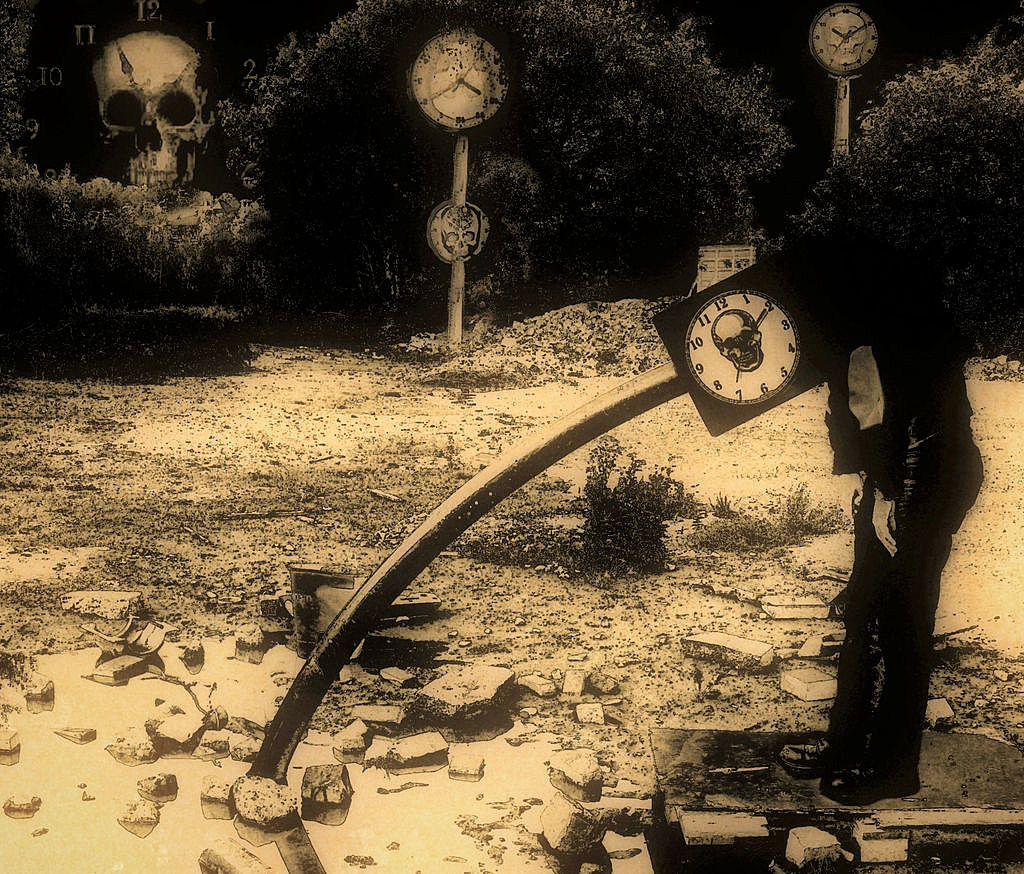
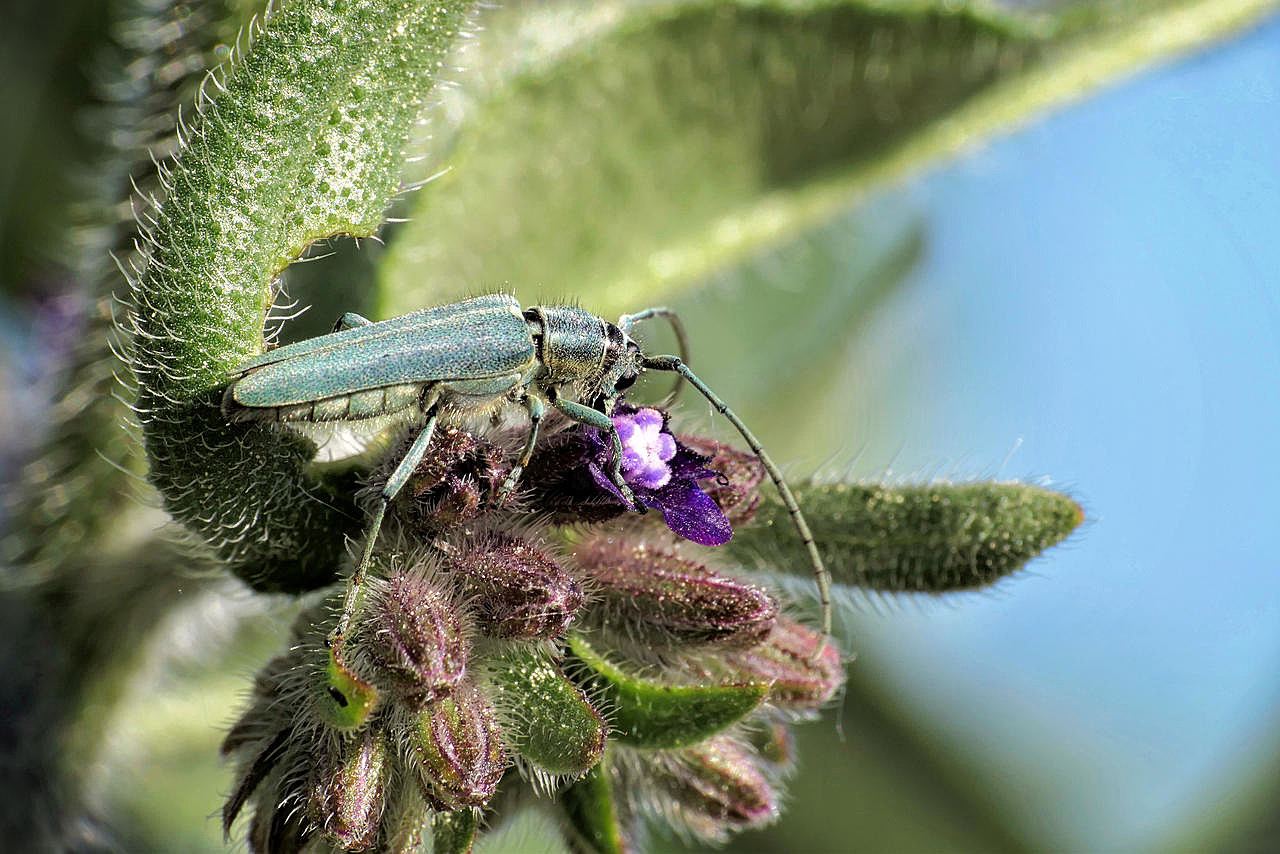
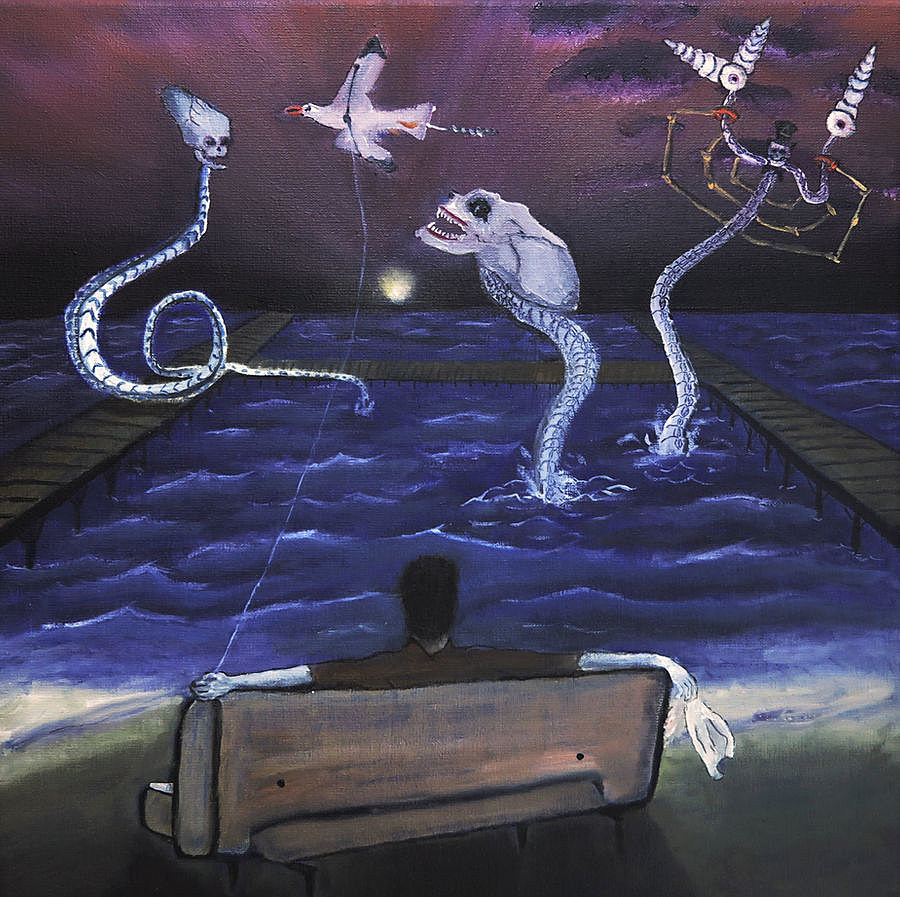
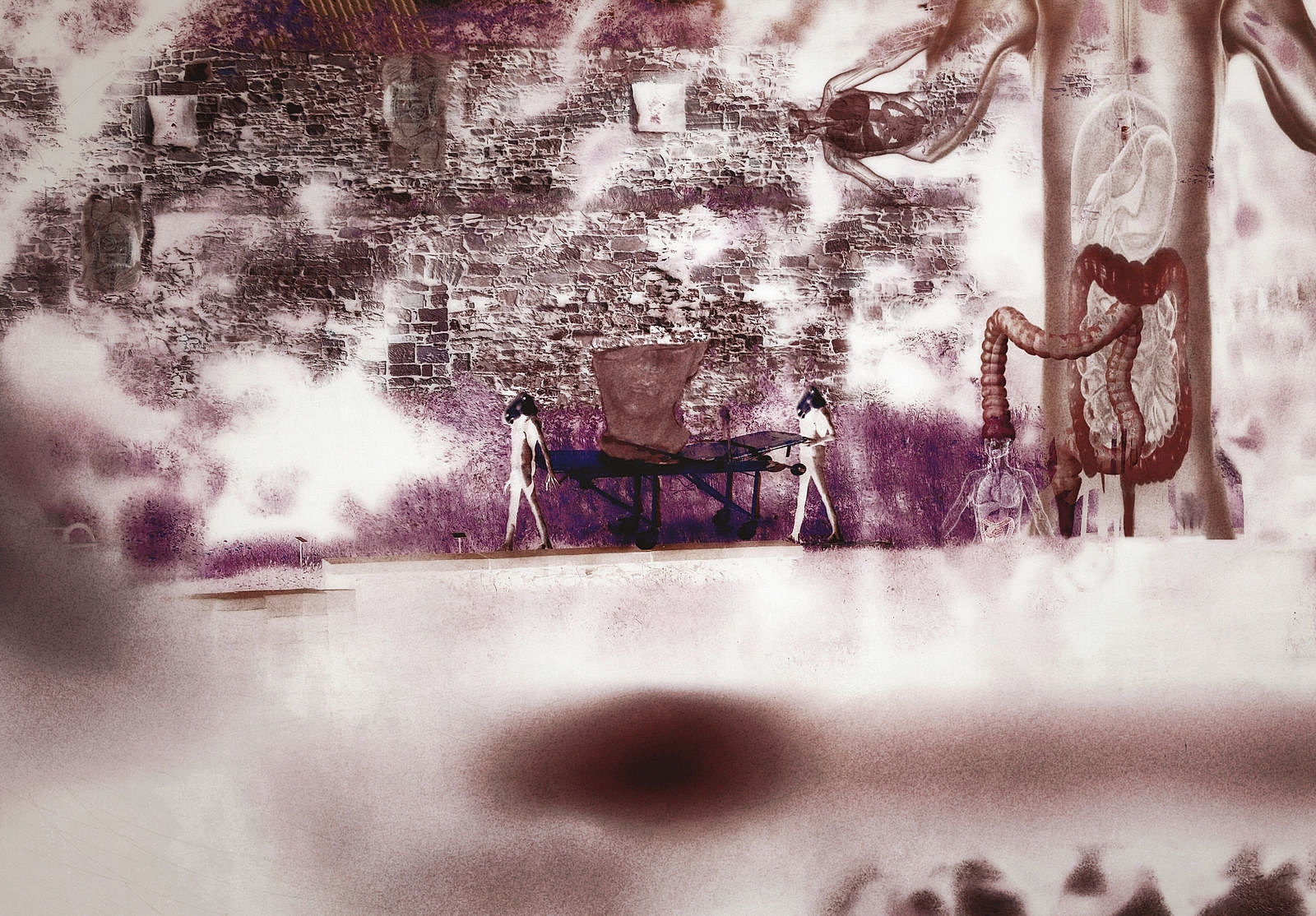
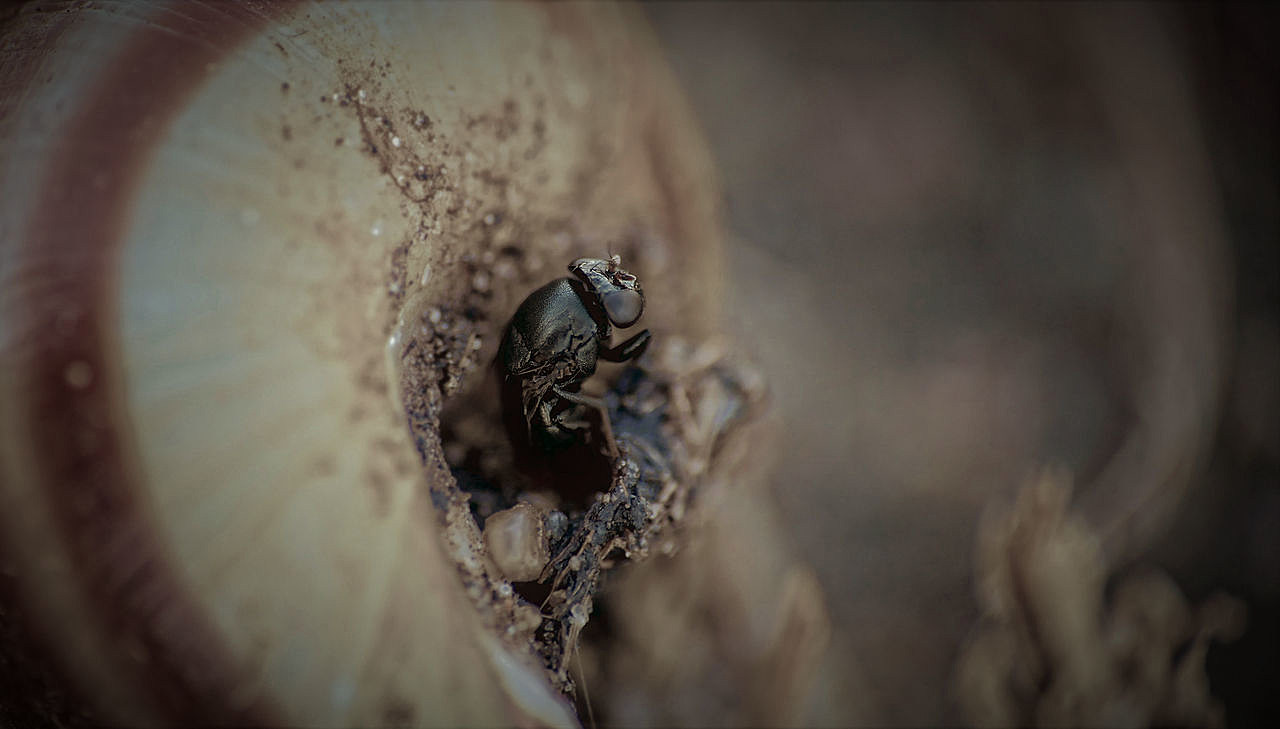
…
Emotionally, Todesstoß touches upon something more maddening and difficult to put one’s finger on without the right mindset. How do you tap into this more psychotic and expressive emotional center when creating music and art?
So it seems I have another mindset than most others, even among “outsiders”? That’s easy: I concentrate on myself and the pictures and sounds in me.
Todesstoß generally released on your own Traumorgane-Kreationen arthouse label, but you within the past decade have transferred the project over to Luciano Gaglio’s I, Voidhanger Productions. What was this transition like for you?
There were many co-operations over the last 23 years, though no label made it to publish more than three releases until now, my own label (I use sometimes) included.
The transition to I, Voidhanger was a relaxation for me, being free from production and main distro aspects, which always collide with the creative part that demands a certain level of contemplation.
So I, Voidhanger maybe will try to break the record of three.
You recently revived the Todesstoß band after a six-year silence. What went into deciding to put Todesstoß aside after so many years of productivity, and why did you decide to bring it back?
I continued constantly working for the project and new releases until April 2019. Shortly before I finished a new album and the re-release of the first demos, multifarious personal issues in the true sense of the word stopped me from going on any further. Suddenly, working on music was no longer possible, no matter what I tried. Even my websites got deleted; my shop I worked for several years was brutally destroyed by the webhoster; I lost contact with musicians working with me; I lost my home two times. And this is only the harmless episodes of a story leading to madness all around me. Even the occult world spread its wings to cover me in shades of enmity.
After a while, I recognized that I had to accept this situation and concentrated to get my life stabilized. From 2019 to 2022, I focused on private ornithological and entomological discovery, moving from the east to the south and from the south to the northern part of Germany.
As you can see from my point of view, the break took three and a half years only.
It really feels like bringing back though, bringing back myself to the inner world I left to go on another journey in the valley of chaos.
As a visionary returning is not my first choice, I prefer to re-conceive the continuation as a usage of possibility to do what I can.
Generally speaking, Todesstoß releases pair with intense artistic presentation, be it art prints, dense booklets, or other musical extracurriculars (though I’m sure you consider these to be gesamtkunstwerk in their own right which are not separate). As a visual artist yourself, how do you find the correct pairing between the visual and the sonic, and which generally comes first in your creative process?
Well, I think it always has been and still is a steady process and correlated. What is for sure is that the alpha of a new vision always is to find in thought, which is a further step of intuition
.
Overall the first spark for a lucid inner vision is either a poem I wrote a melody coming to my mind, or the wakening call of an image that completes a concept by bridging an inner conflict,
leaving out the banal skill of developing artwork for music or composing music to artwork.
Ultimately there’s no first or last, but the overarching.
Visually, Todesstoß touches upon a few art styles, be they folk art, expressionism, the avant-garde and Modern, and so on, all under a blanket “Martin Lang/Traumorgane” type of style. What inspires you to create art like this, and what are your artistic inspirations overall?
Talking about this very fundamental aspect of life itself, it leads to the main question: Why do we create something anyway?
Inspiration is only a good help for the necessity to form in this earthly existence not who I want to be, but who I can be. The moment of inspiration comes alive when empirical values are being transformed to personal aesthetics as a basic module of expression of which art is the compressed vision.
As you have stated correctly, from the beginning until now, I have chosen slightly varied art styles at least underlying my personal aesthetic compressed vision depending on the status quo of my soul situation. It’s not a choice for me of what I want to be a part from, but what is part of me. So inspiration is everything around me that wants to be a part of myself!
I am aware of the fact that I answer in a very metaphoric way and want to add that this is because I prefer the element of air. To show my humility to earth I want to add concrete inspirations in my day-to-day-life: glances of children, insects, birds, the wind, my separation of trivial things and trash, art, literature and music of my soul mates all over the world.
Your latest album, 2017’s Ebne Graun, is a single 46-minute song which culminates a gradual stretching of song lengths since Euer Gnaden and Flesh of L.’ s introduction to the band within the past decade. Was it your intent to create something so long, or was this more of a natural progression?
It’s not a determining fact that the lyrics should have a certain length, but the characteristic mannerism to invite epic thoughts leading to a long-living creature of a song.
In simple words the idea, the vision has to invite myself and anything further will be as natural as the vision itself. The idea behind Ebne Graun is the one of the afterlife being just in such a way as every dead soul arriving in the beyond is imagining it due to its individual state of spiritual oscillation. All begins in self contemplation and silence leading through several steps of awareness in a disembodied state and a final conclusion in the end. The requirement for this evaluation leads to “only” 46 minutes approximately. A short time for an afterlife experience that can take aeons in reality?
Do you feel Todesstoß songs will grow even longer over time? Or will more distinct and structured songs make a return to the project?
Relating to future compositions, I only can listen to what the songs are whispering in my ears, becoming living creatures and they decide how big and mighty they want to become. I am only the gardener pouring my plants turning into sonic shapes.
When it comes to material already finished, the 25 minutes mark is not exceeded so far.
The typical length of a Todesstoß song roughly speaking lies between 7 and 25 minutes.
What I prefer and need is a wide area of structuring leaving tiny spaces for the banal and bathetic.
How do you find yourself writing Todesstoß songs? Do you have a specific Todesstoß process?
It’s nothing dramatic. Just calming down, checking what has arrived and developed in me, that can be transformed to a poem/lyrics, music, or visual art.
The root of the process is to collect and get aware of what impressions I gathered. These impressions are considered very carefully with elements of my will and emotionalism. Towers of a new building in my spirit world.
You’ve recently been publicly active as Venuspuls, your “expressive electronic music” project, having released a new album this past January. Though obviously different in execution, there are undercurrents of the surreal, illness, and other themes which tie Venuspuls and Todesstoß together. Do you feel that these projects are thematically and artistically connected?
Oh, it seems you refer to an old album description of the second album Exitusse Aanaavee I missed to update and put on my new Bandcamp site. This album and the last sign of life was actually in 2013. So we talk of a 10 year silence for this project (I still love).
For new Venuspuls material being in progress at the moment I started a little sigh of life by creating the bandcamp site for now, where all existing material I ever have put out is available and anyone interested what I did besides Todesstoß is invited to check this out here.
Maybe it’s the two sites of the same coin, who knows. Topics and visual ideas are different, but the source is the same, just me. Besides the fact that I wanted to create electro music with Venuspuls, there is also the wish and chance to have a second child I can raise. If Todesstoß is my son, Venuspuls is my daughter. With the little but fine difference that I give essential features not only to their flesh but their soul.
While Todesstoß is soaked with martial, chivalric spirit of metaphoric explicitness, Venuspuls is impregnated with the Lilith / Venus powers leading to the wicked, vegetative eroticism of the anti-world.
…
…
You spent five years working on the latest Venuspuls album, Exitusse Aanaavee. What goes into crafting an album like this? How can you account for the five year work period?
The tools and instruments are different and so is the composition flow and tenor. While I can just play a riff on my guitar for Todesstoß I have to create Venuspuls on synths or virtual tools which takes a little more approach for me being more instrument-orientated.
I also had and still have compared to possible Todesstoß lyrics only a few poems that fit to Venuspuls’ vision of music. As I remember around 2008–2013, which marks the period of time we’re talking about, I composed and recorded several Todesstoß works, so a lot was going on around that time. Nevertheless, I put everything into the Exitusse Aanaavee album I could offer and I’d wish that more people could share my undimmed excitement for this album, which I see at last as one of my most mature works. After ten years I still think every second, every single note is set at the right place.
…
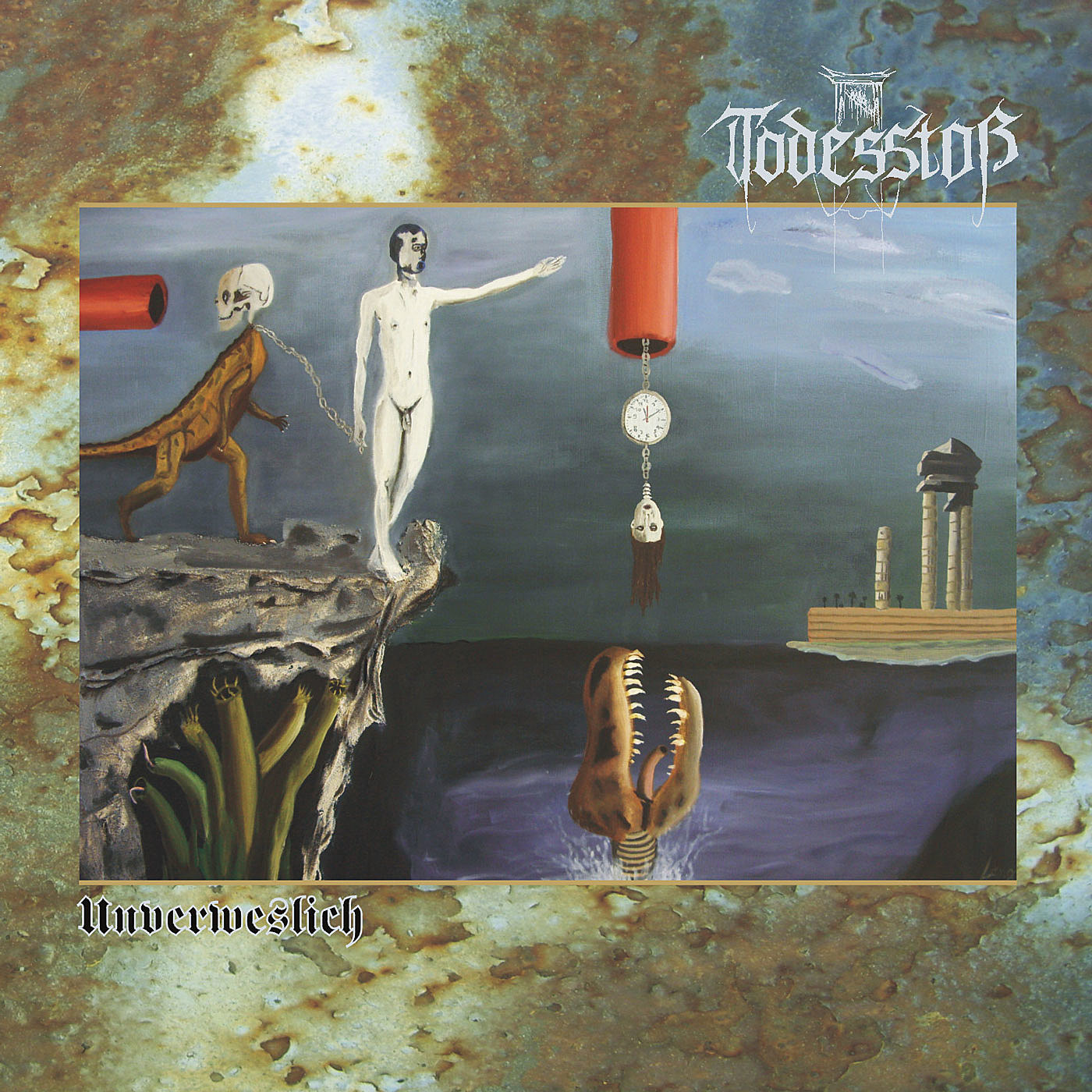
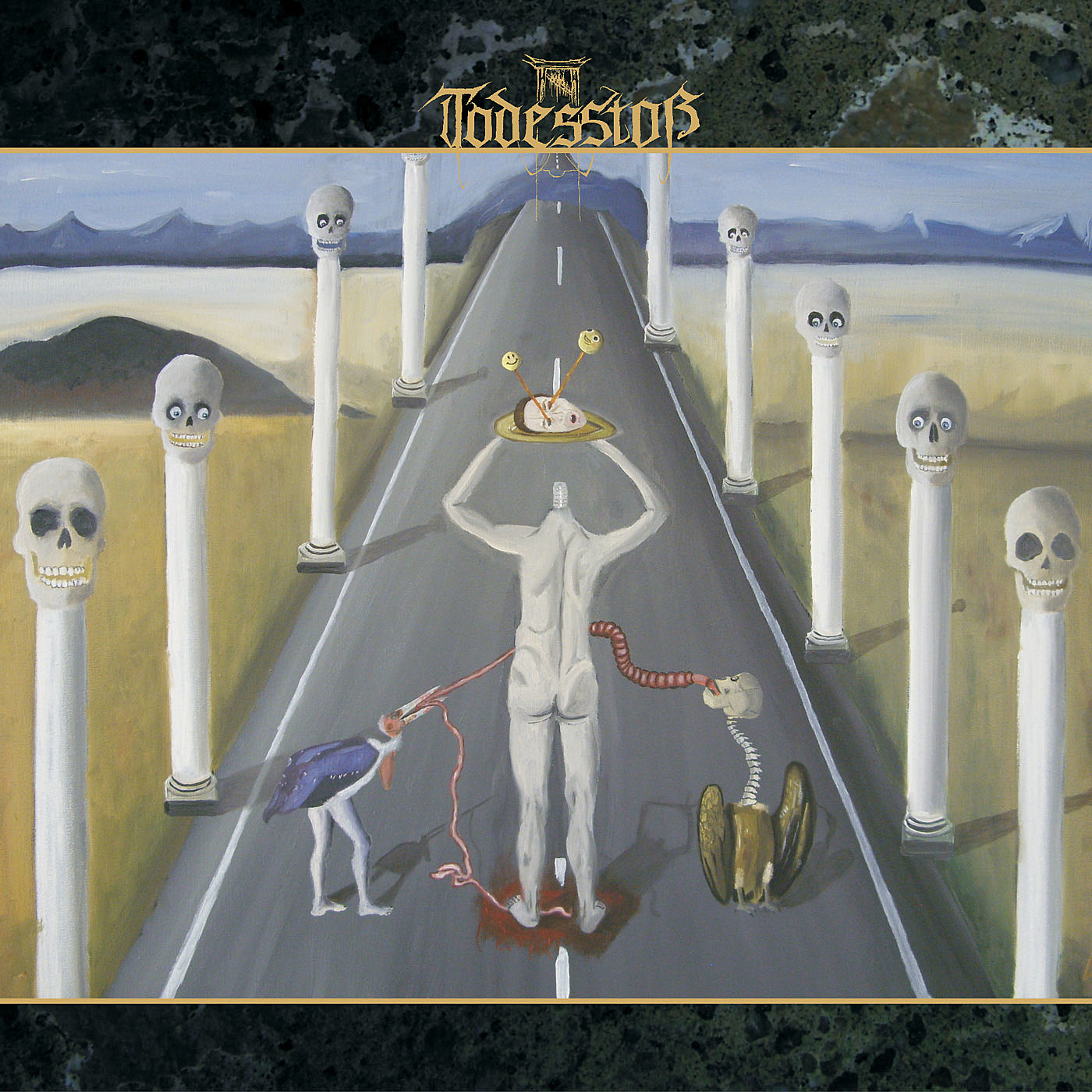
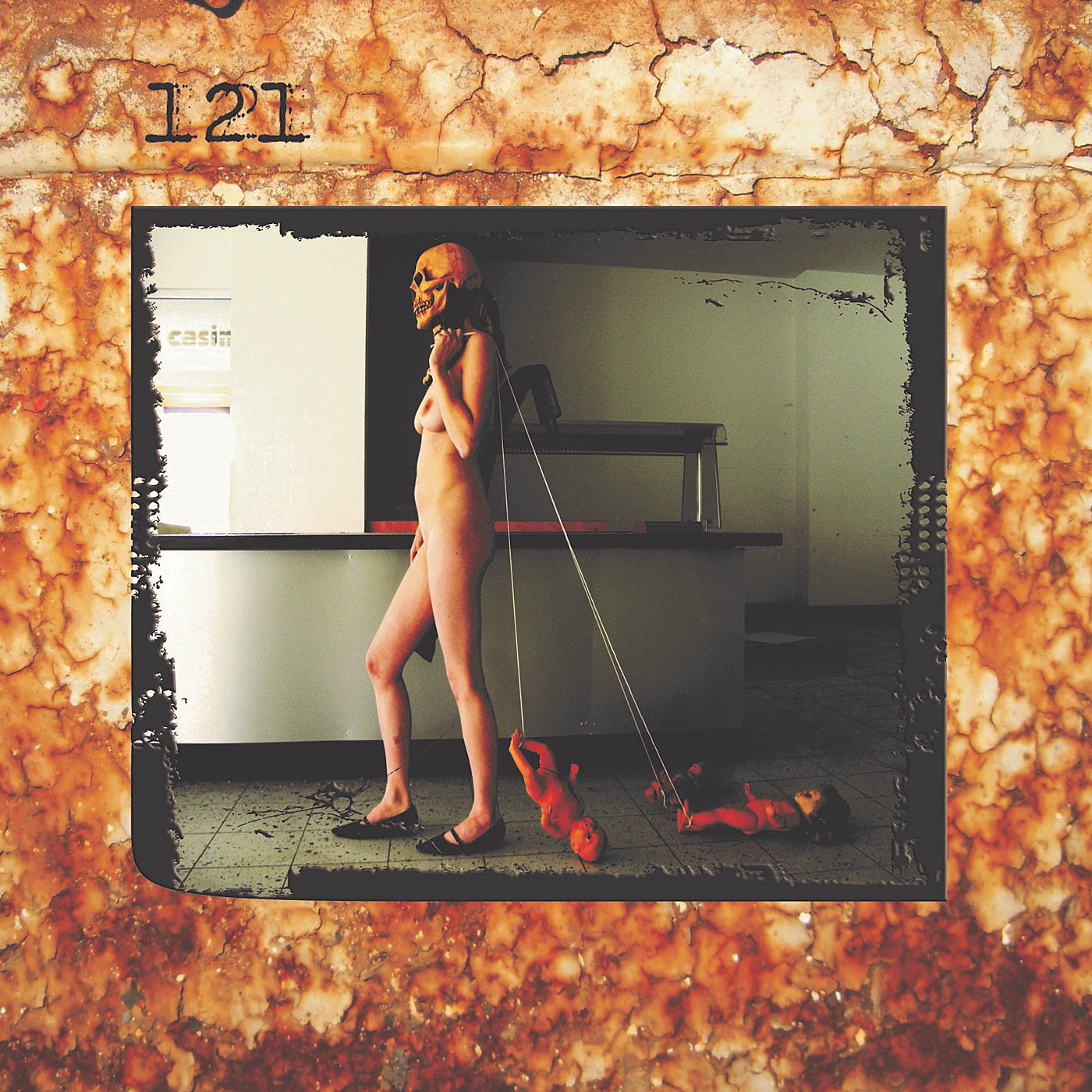
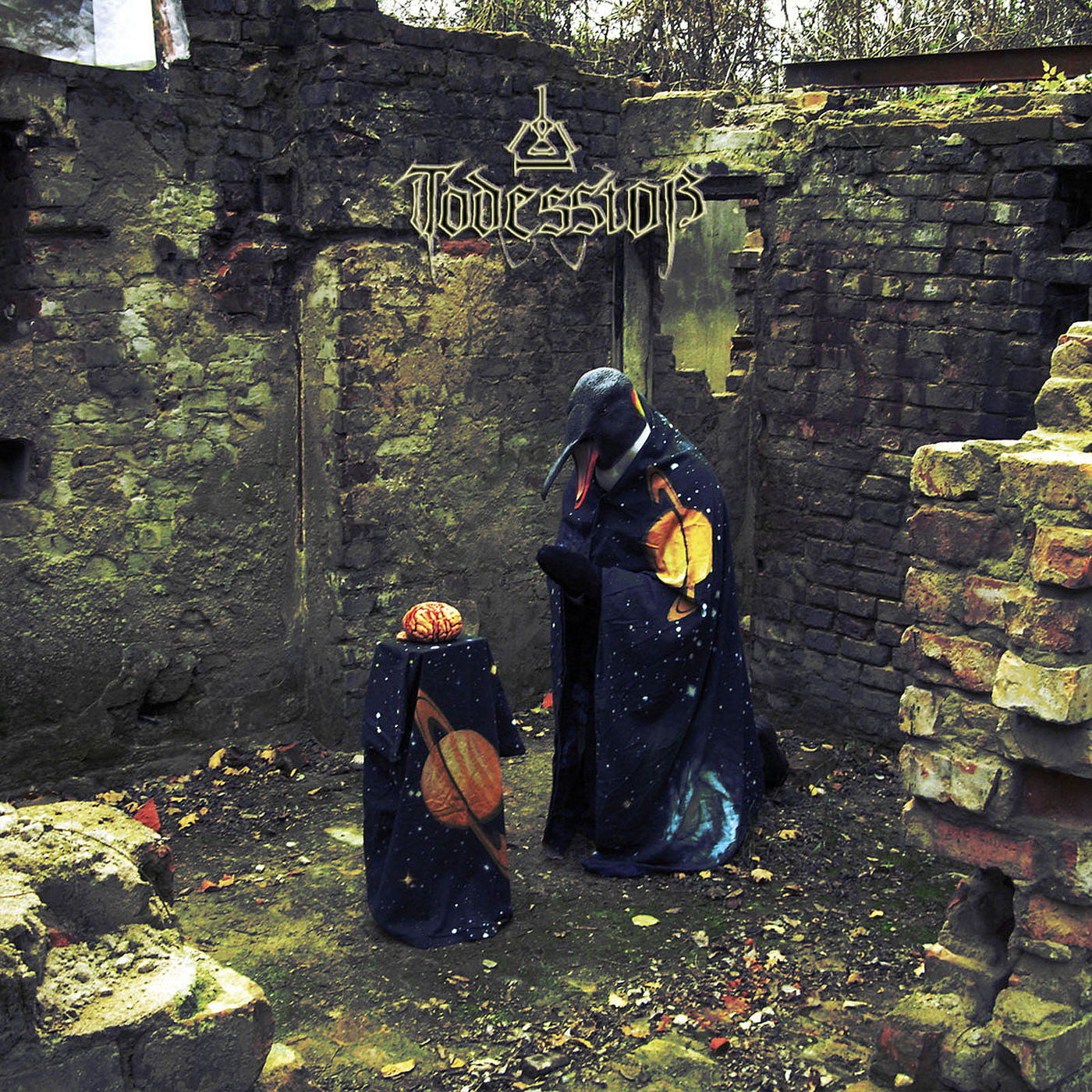
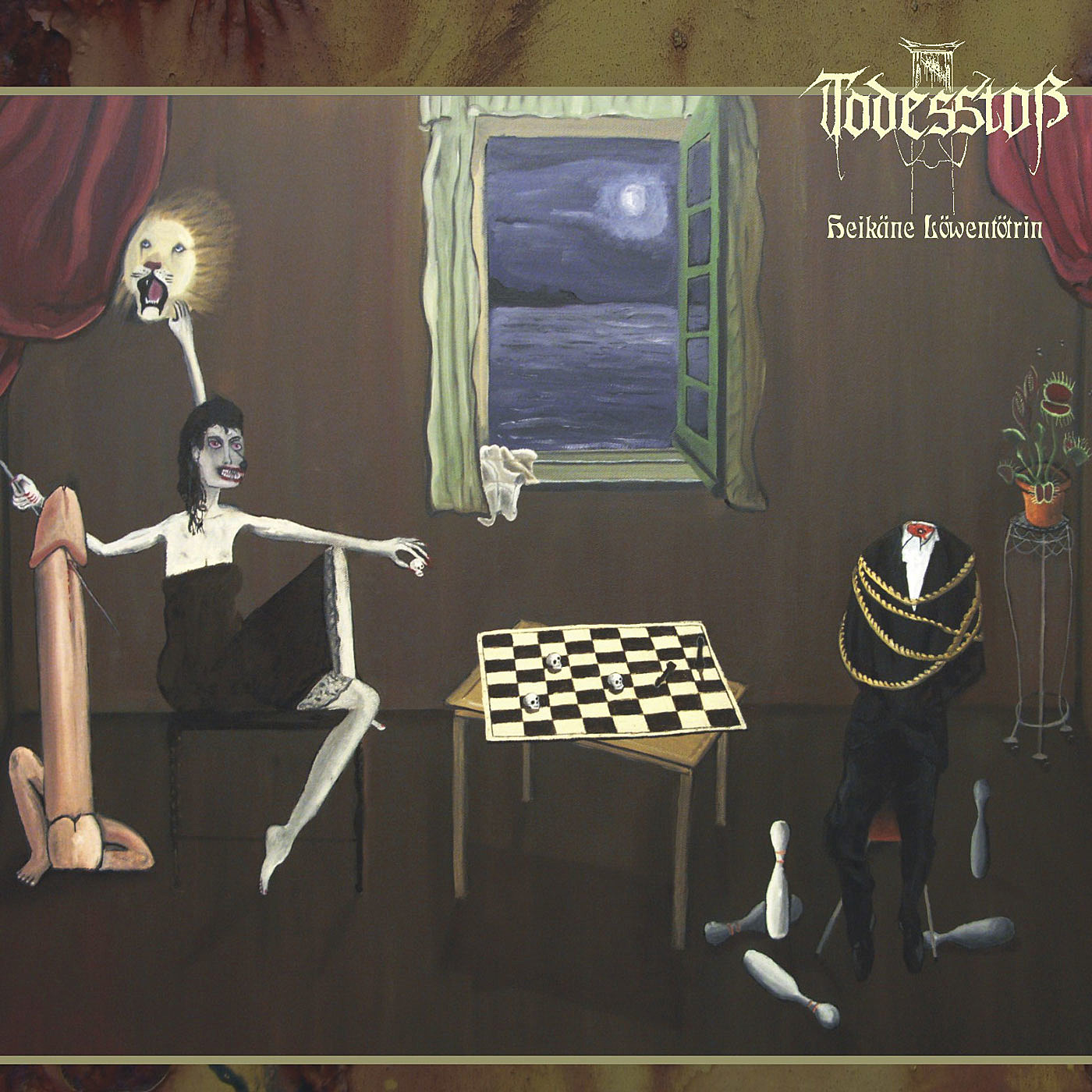
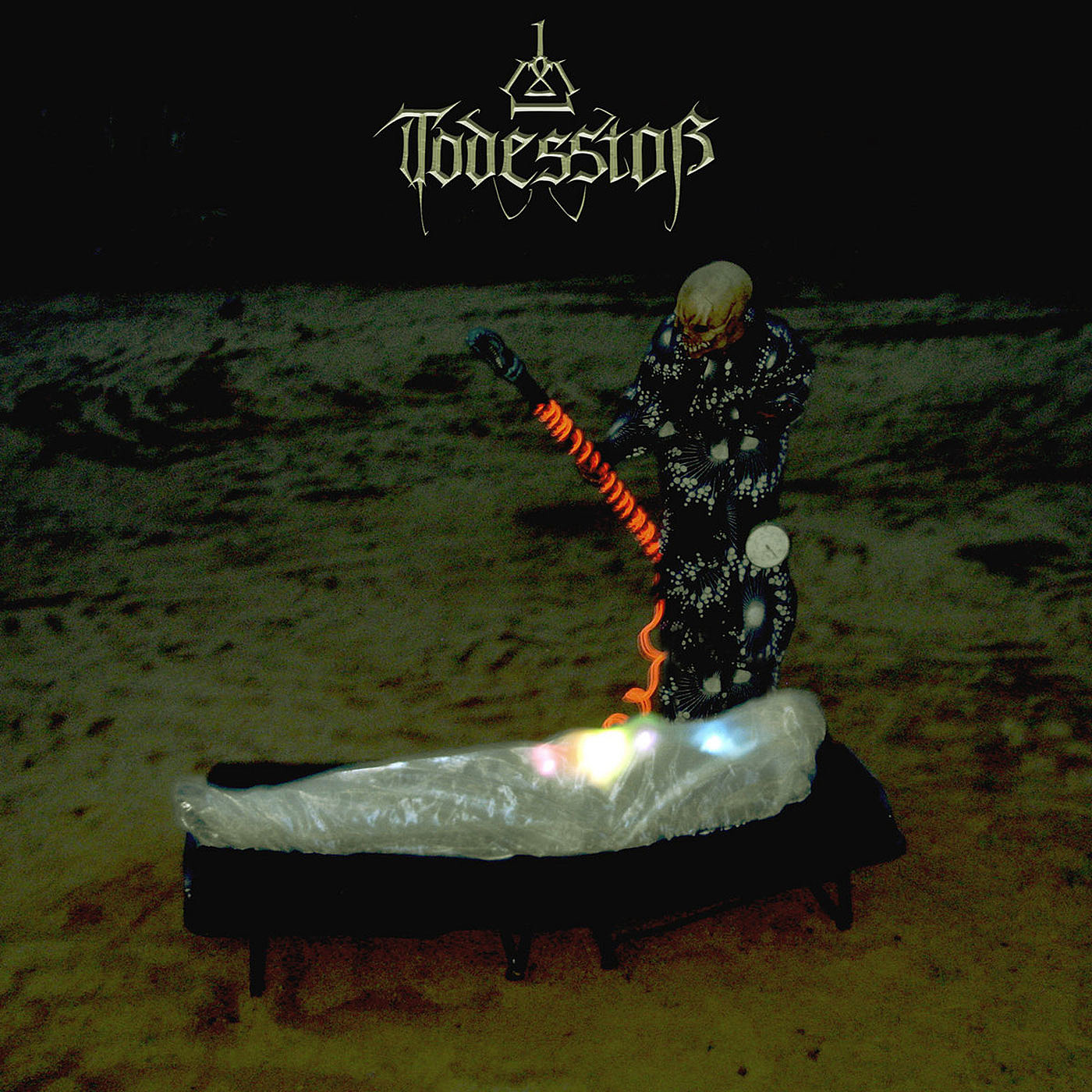
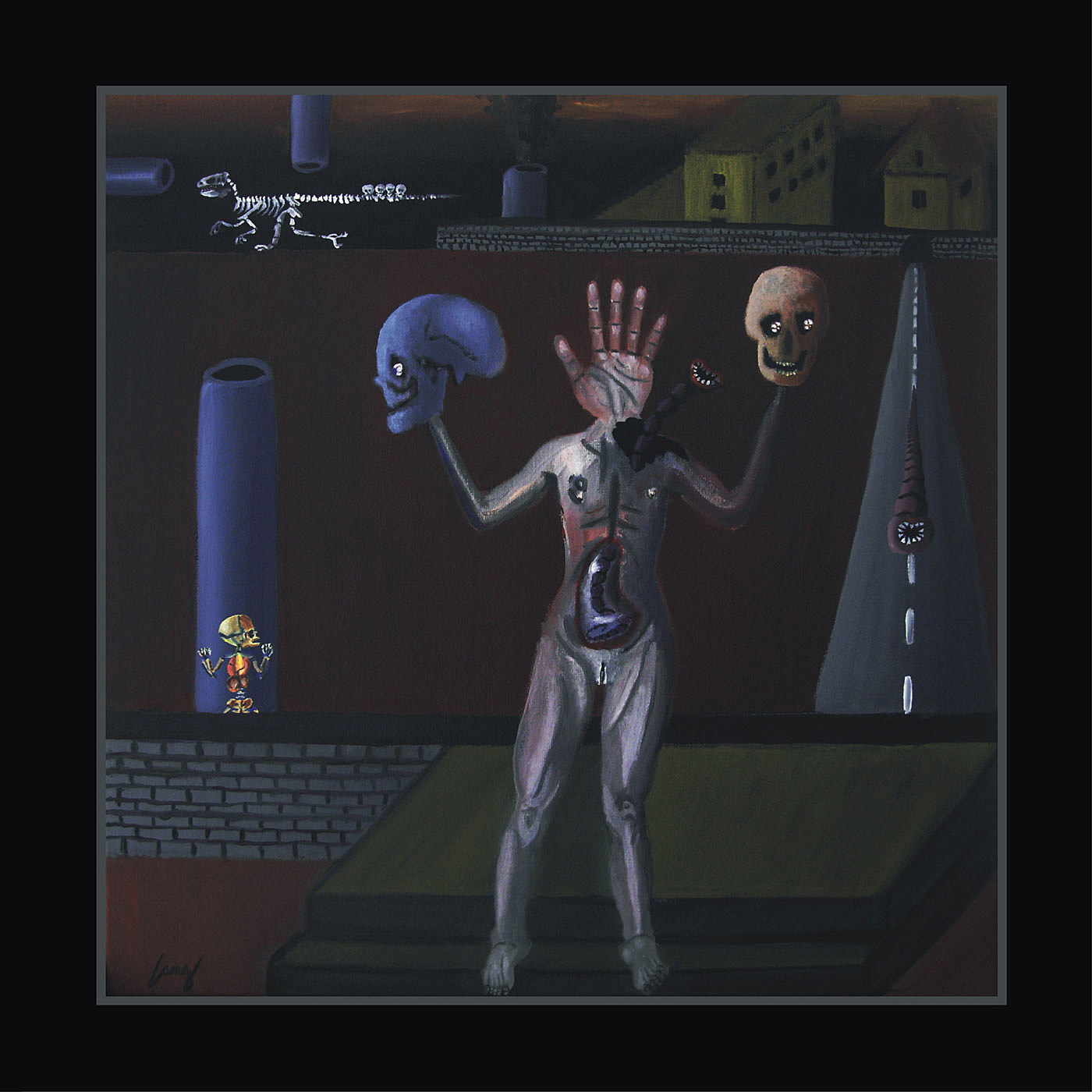
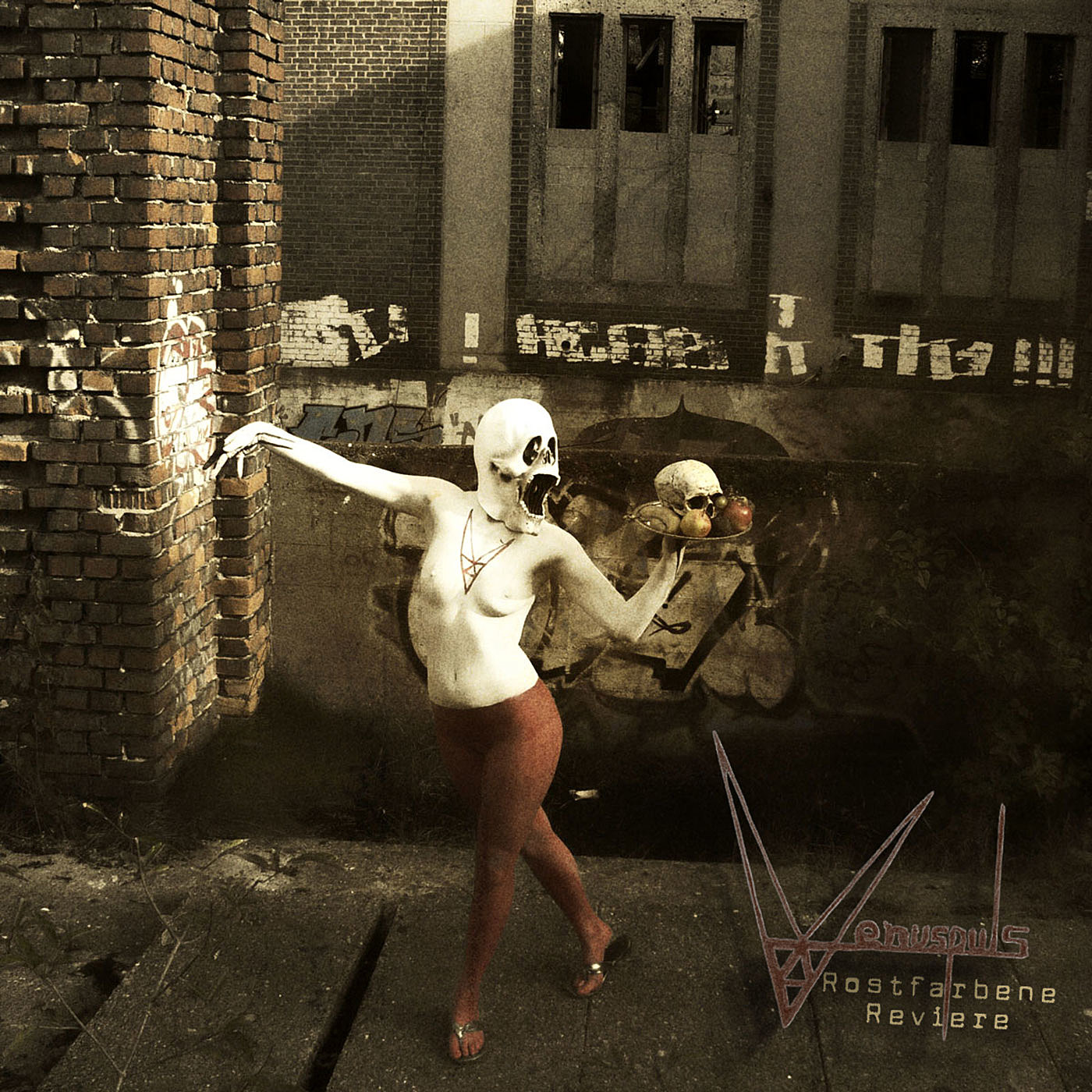
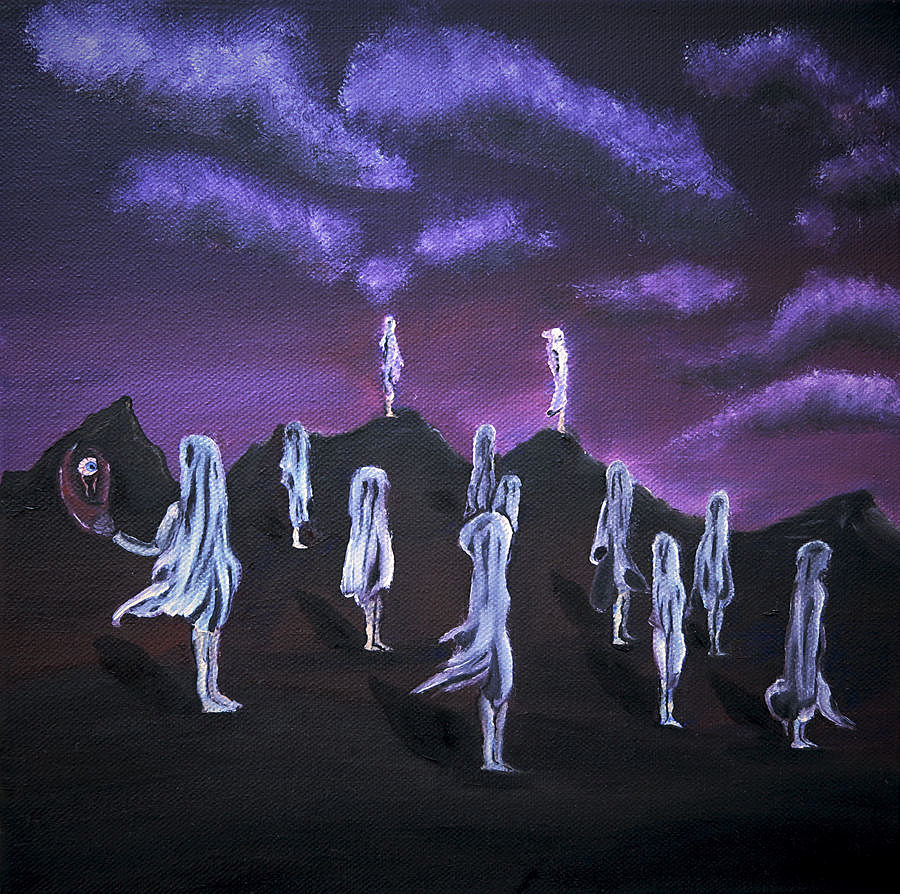
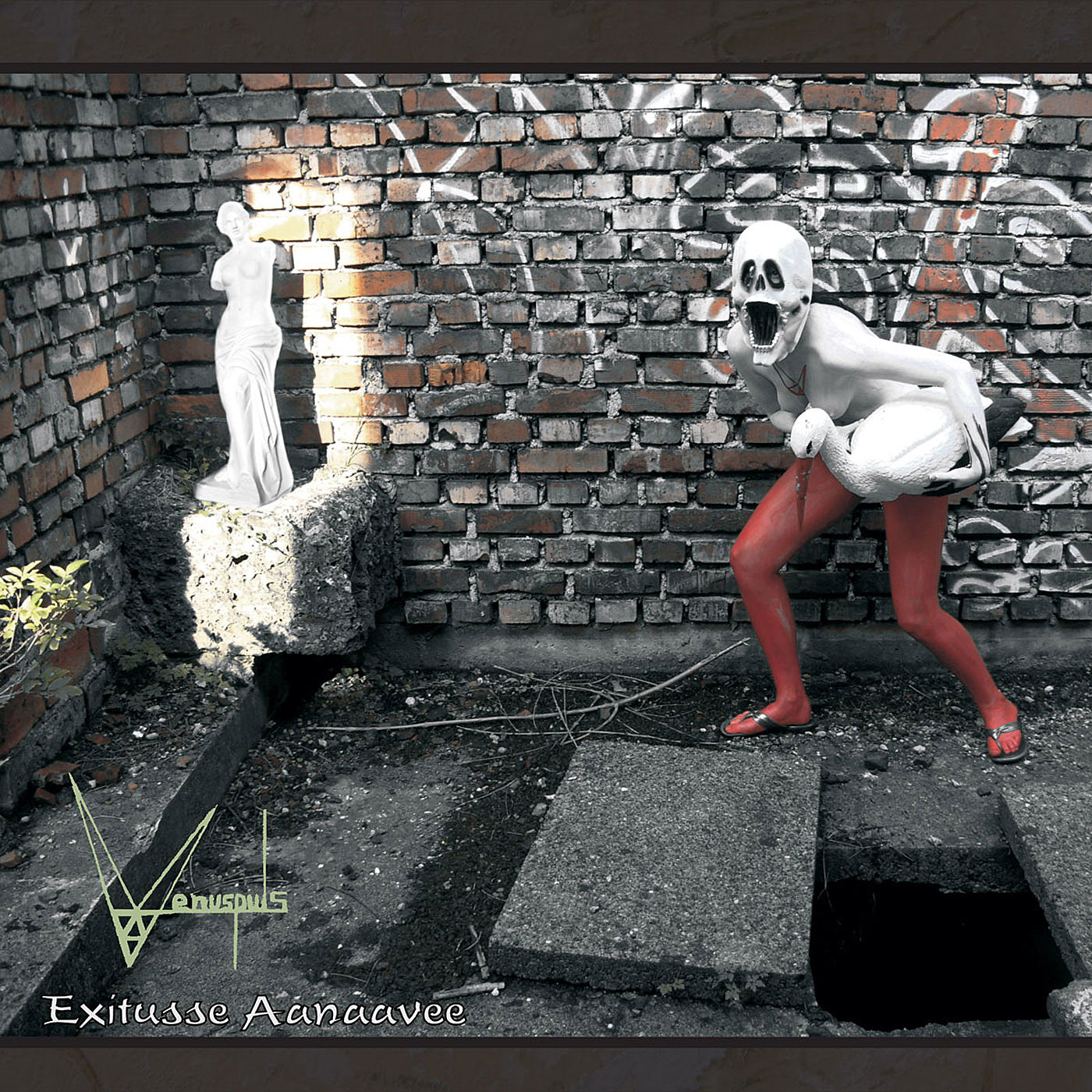
…
Todesstoß has existed in one form or another since 2000, marked with the release of your first demo Endlose Suche. How do you feel Todesstoß has evolved since then?
Aye, the project was formed in 2000 and saw the first two releases Endlose Suche and Eine verlorene Seele. At the beginning, I was driven and powered by a rebellion force of youth which found its visual art equivalent and support in the fields of Jugendstil, for example works by Hugo Höppener (Fidus), Arnold Böcklin, Franz von Stuck, and at the same time northern and Germanic mythology and dreamlike visions by myself.
Bit by bit, the more personal aesthetic aspects evolved: integrating my own visual art, individualistic lyrics, and also the music transformed from classic black metal of the second wave to a more distinct self-sufficient effort leading even to a status of separation, which came natural and was not forced at all. The Sehnsucht EP for instance, was a calm song, with ultra eerie vocal presentation of an amorous and at the same time savage offering of the inner part of my soul. Here for the first time an unsparing vulnerability was shared with the audience, that might have led to several grazing shots by music.
Another significant work was the Spiegel der Urängste EP, presenting a radical guitar sound, combined with an uncommon artwork and again the spectral high shriek vocal performance, almost piercing the souls of listeners.
For the debut album Stelldichein, I used my first own oil painting as cover artwork, which paved the way for a combination of my creative fields of operation.
With the Pantherwelle demo (2006), showing the first real surrealistic cover art, Würmer zu weinen (2008) and Abwegnis 121 (2010) I directed the project even further into spheres of illusoric surrealism, not in consequence of artificial lunacy, but the wish for an even more radical version of showing my reality to others, no matter what it might engender, far from categorization.
The simple early lyrics processed to lyrical writings including more and more imponderabilities and even style wise neologisms as the result of a super nonconformist perspective I developed as my individual normalcy.
With the 5th album Sauglingshängwerk Aushilfsheins, I extended the lyrical story to a semi-fictional and metaphoric social criticism, by having elaborated a fictional lyrical character, who is the leading man of this extraordinary epic Black Metal opera of insanity.
I even dared into regions of commercial suicide with Hirngemeer, the enfant terrible in my discography, which I see in tradition of presenting new kinds of art as a result of inadequacy of the exhausted conformism, always repetitive patterns of expression, showing narrowness of the mind.
While Hirngemeer took the listeners to shores of insanity as symbol of the wish for a new way of existence, I tried to create with the follow-up album Ebne Graun the ultimate epic song, dwelling in occult, anthroposophic fields of the beyond visions of active principles of life itself, a horror and paradise at the same time, reminding me and the listeners to this world’s duality.
Do you feel Todesstoß moved in a direction you desired from its inception, or has the project’s evolution been more unexpected?
Both my willful ambitions that always can be attempts in a world of chaotic turbulence, and extrasensory influencing aspects, an interference from the external world, filtered by my expositions paved the way to the life cycle of Todesstoß, being the ouroboros of parts of my soul, until light replaces bone.
What can we expect from newer Todesstoß material?
Well, guess that’s up to you!
In 2019, shortly before I decided to make the break, I realized that I had accumulated so much material, without getting it finished, I decided–and this might be a surprise–to start working on a completely new album that will be the follow up to Ebne Graun.
Das Liebweh-Dekret, so its title will present not only six new tracks, which combine all trademarks of Todesstoß in a very worked out form, but also the stunning contribution of a new singer, sharing his main vocals with myself (clean, experimental stuff). I also cooperated with Lidia, an American actress and singer for additional vocal performance in a song. At the moment, I give it the finishing touches, and it’s planned to be released in 2023 via I, Voidhanger records as digital version, CD, and maybe LP, at the same time with Eine verlorene Seele and the tracks from the third demo with Imperium Sacrum under the title of Vergängnisse in a remastered form, also by I, Voidhanger.
On the horizon there’s also the long planned Todesstoß / Venuspuls split album that will include four tracks of each project. Furthermore, the material I composed between Ebne Graun and Das Liebweh-Dekret, material for two albums. All this shall be out until 2025.
Now I open the floor to you: is there anything you’d like to say about Todesstoß, Venuspuls, and/or your art that you haven’t had an opportunity to say yet?
Yes, it also lives and breathes of being experienced.
Any final thoughts?
Thank you for your curiosity leading to this interview and being a gentle and interesting dialog partner.
Greetings to all fans and people who start becoming acquainted with my works.
DeviantArt
E-Stories
Venuspuls
I, Voidhanger Records
…









